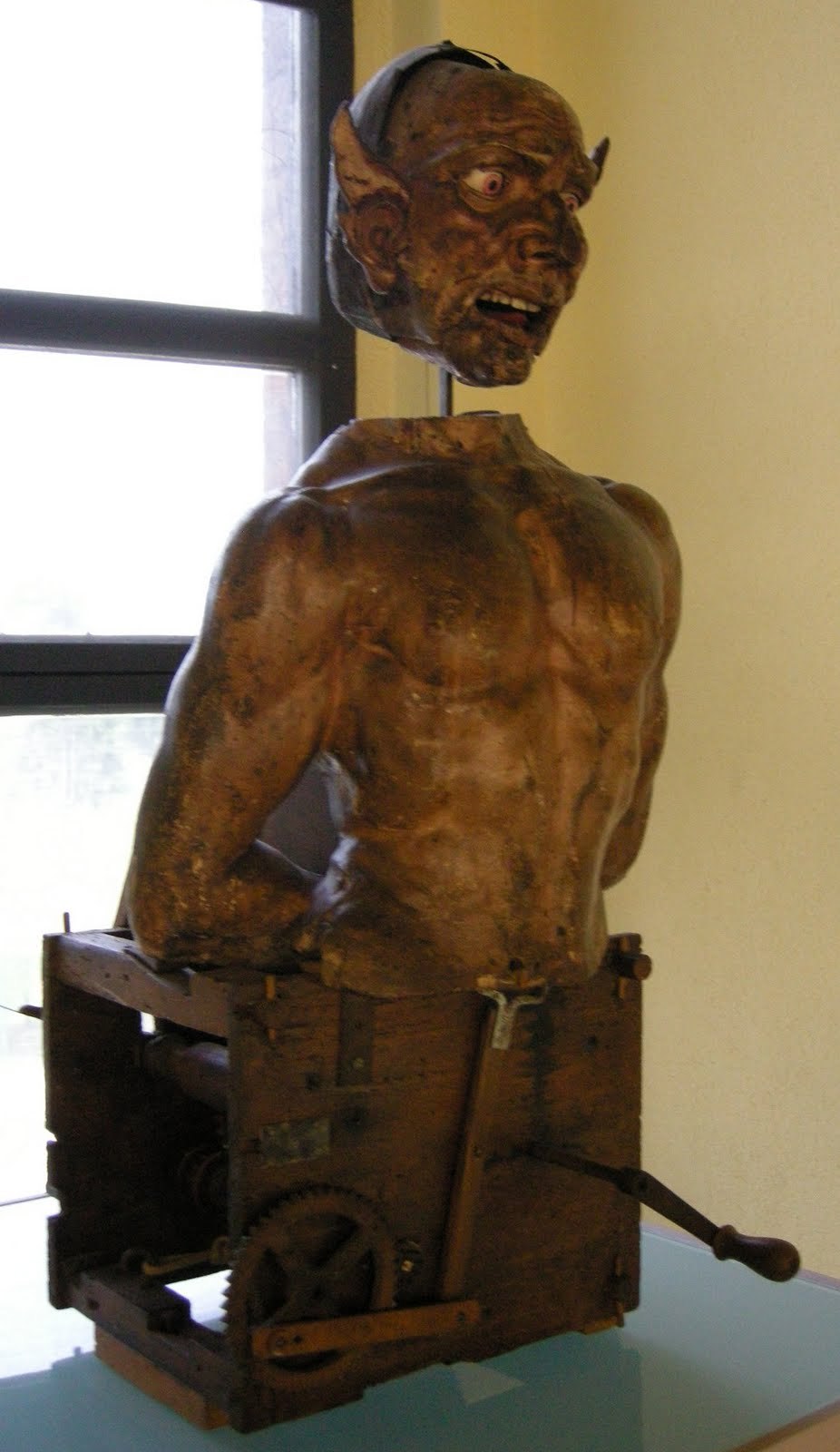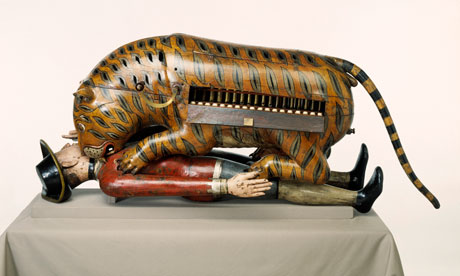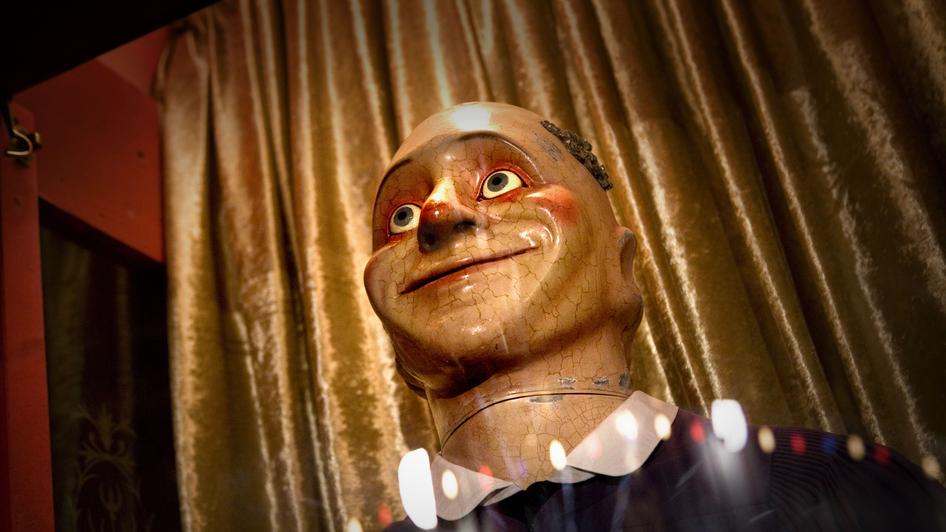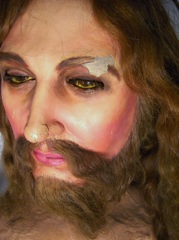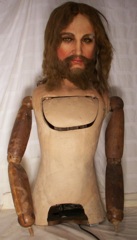 |
| Creepy Clown Automaton |
In the Book of Solomon it is written that Solomon tricked the Djinn, with the use of sorcery and magic, into building the famous Temple of Solomon. Could the Djinn referred to in The Book of Solomon actually describe ancient clockwork robots and simple mechanical tools, which may have been perceived or even encouraged to be believed as magical creatures to the mostly uneducated populace at that time? It seems entirely possible, we know Solomon had a huge library of information at his disposal, and it might have provided him with the means for basic clockwork technology. Also, we know that the Antikythera Mechanism was created around 150-100 B.C., and was designed to calculate the positions of astronomical objects. It was thought to have come from Rhodes, an island renowned for it's automatons, mostly created as toys or moving statues. However, the information gleaned from recent scans of it's fragments indicate that it probably originated in the colonies of Corinth in Sicily, and implies a connection with Archimedes. Archimedes is famous for his many inventions including his heat ray and his Roman warship capsizing machine called the The Claw of Archimedes. The technology for these machines may have been readily available at the time of Solomon, or it was at least possible for somebody with the resources that King Solomon had at his disposal. The technology could have been lost to us when Solomon's library was burned, and his Temple was sacked by the Babylonians.
 |
| Ancient Clockwork Machine: Antikythera Mechanism |
#1 Creeping Baby Dolls
 |
| The prototype was first patented by Robert J. Clay on March 14, 1871. |
Crawling (as in "That baby is crawling!") was once more commonly referred to as creeping, and that's exactly what this scary automaton does. It was first patented by Robert J. Clay on March 14, 1871. However, the prototype in the Smithsonian is a slightly later version. Clay’s patent was number 112,550. The creep baby on display at the National Museum of American History is the patent model for patent number 118,435, submitted by George P. Clarke and accepted on August 29, 1871. Clarke was Clay’s boss and his patent was an improvement on Clay’s original model.
Despite Clay’s expectations, the toy had limited appeal for its target audience of young girls. It was often a better exhibition piece than a cuddly toy, because once the mechanism has broke (which happened often in the earlier models) the automaton's heaviness and hardness made it into a dead weight, rather than a doll that could be integrated into regular play by a small child.
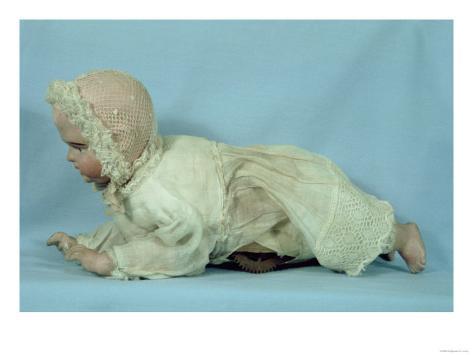 |
| "Creeping Baby" Clockwork Doll, 1871 |
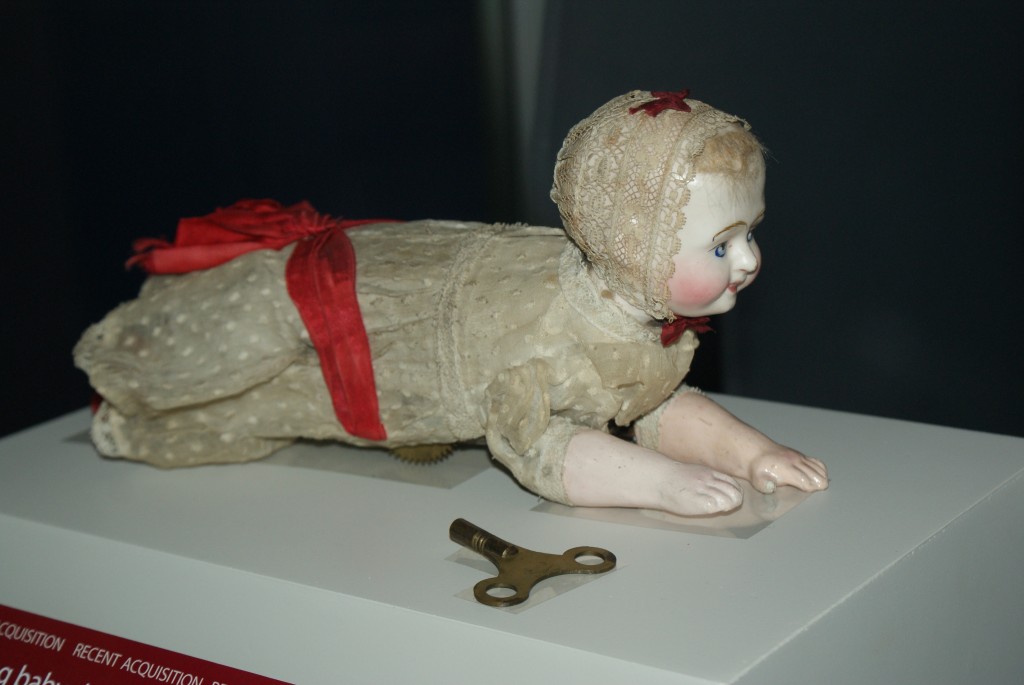 |
| National Museum of American History, DC. Creeping baby doll, 1870s. |
 |
| Clockwork creeping baby doll patented in 1871, Clinton County History Center. |
 |
| Mechanical Creeping Baby Doll ca. 1871 |
#2 Spanish Robotic Monk
An incredible piece from the National Museum of American History in Washington, DC – a Spanish robotic friar from around the year 1560. Created right after the Spanish Inquisition, the arms and eyes of the automaton move as it “walks” across a table, beating its chest and kissing a rosary.
You have not seen creepy until you watch this video...
#3 Italian Devil Automaton
This Italian Automaton (The Devil) was carved in wood during the 15th and 16th centuries, from the Wunderkammer owned by Ludovico Settala. It could, "roll its eyes and move its tongue, emit a noise and spit smoke from the mouth."
#4 White Man Eating Tiger Automaton
This is the 18th-century automaton that inspired the poet Nagra’s title poem. It once belonged to an Indian ruler who had it made in symbolic opposition to the British. The tiger sinks his teeth into the neck of a supine wooden (British) soldier. The witty inspiration is to translate the lion's last roar into a message. The message seems pretty clear.
#5 The Undertaker's Cabinet Automaton
This unusual automaton is marked as being manufactured by J. Dennison and the scene depicts a man in his coffin at a funeral parlor. When a coin is inserted into the mechanism, a skeleton head appears behind the coffin and the corpse bolts to an upright position and turns his head. The skull then disappears and a devil appears in it's place.
#6 Disembodied Writing Hand Automaton
This disembodied automaton human hand could write out full sentences and is featured in the Swiss Watch Museum.
#7 Dr. Who Clockwork Robot
 |
| Clockwork Robot - Dr Who Exhibition, Land's End, Cornwall |
This robot is modeled after the autons (automatons) from the classic telivision series Dr. Who. In the series the clockwork robots were created by a spacecrew from the 51st Century. When the ship was damaged, and vital machinery was destroyed, they began to use the deceased crew's body parts instead. In the show, the automatons would break any clocks in the room to disguise their arrival and then slice open people to harvest their vital organs. They were armed with blades and saws.
#8 Creepy Jesus Automaton
This antique automaton (circa 1915-1925) recently sold on eBay for $1,775. The auction listing stated it may have been "a knight from a King Arthur type of display," but it looks as if it would be more at home in a crucifixion scene. The automaton's head and eyes move eerily from left to right, as if it is following you around the room with it's gaze, and the eyelids open and close as if the doll is blinking. This 18th century automaton's chest even moves up and down, as if it's alive and breathing!
#9 Fortune Teller Automaton
 |
| Old Puss in Boots Fortune Telling Automaton |
 |
| Antique Gypsy Fortune Telling Automaton |
 |
| Mechanical Gypsy Automaton |
#10 Videos of Creepy Automatons
Creepy Clown Automaton
Extremely Creepy Automaton - Don't say I didn't warn you...
Woman Automaton with intense and creepy look on her face...
17th Century Clockwork Robots, ancient robots, ancient technology, automata, automatons, Creepy Old Automatons, history of robots, oldest automata, robots, steampunk, 17th Century Clockwork Robots, ancient robots, ancient technology, automata, automatons, Creepy Old Automatons, history of robots, oldest automata, robots, steampunk, 17th Century Clockwork Robots, ancient robots, ancient technology, automata, automatons, Creepy Old Automatons, history of robots, oldest automata, robots, steampunk, 17th Century Clockwork Robots, ancient robots, ancient technology, automata, automatons, Creepy Old Automatons, history of robots, oldest automata, robots, steampunk, 17th Century Clockwork Robots, ancient robots, ancient technology, automata, automatons, Creepy Old Automatons, history of robots, oldest automata, robots, steampunk, 17th Century Clockwork Robots, ancient robots, ancient technology, automata, automatons, Creepy Old Automatons, history of robots, oldest automata, robots, steampunk, 17th Century Clockwork Robots, ancient robots, ancient technology, automata, automatons, Creepy Old Automatons, history of robots, oldest automata, robots, steampunk, 17th Century Clockwork Robots, ancient robots, ancient technology, automata, automatons, Creepy Old Automatons, history of robots, oldest automata, robots, steampunk, 17th Century Clockwork Robots, ancient robots, ancient technology, automata, automatons, Creepy Old Automatons, history of robots, oldest automata, robots, steampunk, 17th Century Clockwork Robots, ancient robots, ancient technology, automata, automatons, Creepy Old Automatons, history of robots, oldest automata, robots, steampunk, 17th Century Clockwork Robots, ancient robots, ancient technology, automata, automatons, Creepy Old Automatons, history of robots, oldest automata, robots, steampunk, 17th Century Clockwork Robots, ancient robots, ancient technology, automata, automatons, Creepy Old Automatons, history of robots, oldest automata, robots, steampunk, 17th Century Clockwork Robots, ancient robots, ancient technology, automata, automatons, Creepy Old Automatons, history of robots, oldest automata, robots, steampunk, 17th Century Clockwork Robots, ancient robots, ancient technology, automata, automatons, Creepy Old Automatons, history of robots, oldest automata, robots, steampunk,







